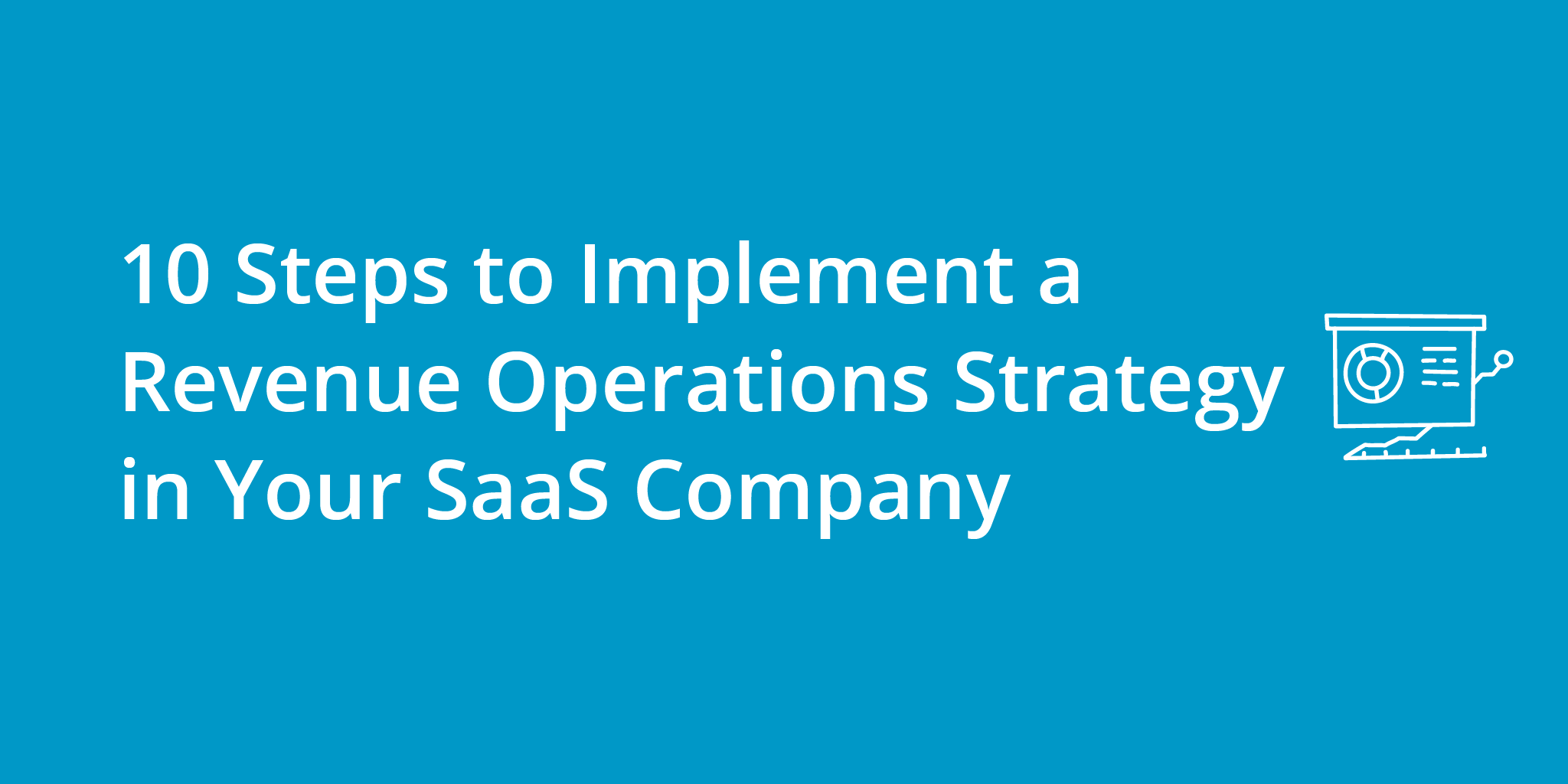Revenue operations is a business function focused on optimizing the revenue growth of an organization. It works to streamline processes and systems in order to uncover new opportunities for growth and increase visibility into the effectiveness of existing tactics. By centralizing sales, marketing, finance, customer success, and other areas into one cohesive unit, revenue operations provides important data insights that allow organizations to maximize their potential.
Revenue operations is of particular importance for B2B SaaS companies because it helps them to understand their buyers and [increase sales efficiency]( How To Leverage RevOps Automation To Boost Revenue – Kixiehttps://www.kixie.com › sales-blog › how-to-leverage-r…). It provides insights into the company’s pricing, product features, website performance, customer onboarding, etc., allowing teams to identify opportunities for improvement in different areas of the funnel. By leveraging data-driven methods and centralizing processes, revenue operations enables organizations to find new ways of driving leads and ultimately convert more customers. Additionally, revenue operations can also help identify potential revenue leakage points within the sales cycle and rectify them before any major losses occur.
Needless to say, revenue operations (or RevOps, for short) is a vital part of B2B businesses, and if you haven’t already implemented a revenue operations strategy, now is a great time to begin! In this article, we’ll take an in-depth look at 10 steps you can start today to create and implement a revenue operations strategy within your organization.
Step 1: Define SaaS Revenue Goals and Objectives
Clearly defined goals and objectives for revenue operations are essential for organizations to make informed data-driven decisions and measure their success. Establishing clear targets allows teams to create actionable plans with measurable KPIs, track performance, and optimize operations on an ongoing basis. Having specific goals also encourages continuous growth and innovation, as well as improved collaboration between different departments within the organization.
Key performance indicators (KPIs) for revenue operations can vary depending on the organization’s goals and objectives. Common KPIs for revenue operations include customer lifetime value (LTV), monthly recurring revenue (MRR), churn rate, customer acquisition cost (CAC), average sales cycle time, lead conversion rate, close rate, and upsell rate. By tracking these metrics over time, companies can gain valuable insights into their operations and make informed decisions to improve their results.
Set clear, SMART goals – ones that are Specific, Measurable, Achievable, Relevant, and Time-bound. Consider breaking down these goals into smaller milestones to make them more manageable and attainable. Make sure that each goal is in line with the organization’s values and culture so everyone involved is inspired and motivated to achieve it. Finally, create an action plan for how to achieve each goal and track progress towards them regularly.

Step 2: Establish Cross-functional SaaS Teams
Cross-functional collaboration is essential for successful revenue operations, as it ensures everyone involved is working together towards a common goal. Teams need to be aligned on the same strategy and objectives, and have open communication between departments so they can quickly identify problems and address any roadblocks they may face. Collaboration also helps foster innovation by giving teams access to different ideas and perspectives, which can lead to new solutions that might not otherwise have been identified. Ultimately, a strong cross-functional approach will ensure a more effective implementation of strategies, resulting in improved efficiency and higher returns.
Establish a baseline of progress that each department should aim to reach, and make sure everyone understands the expectations. It’s also important to communicate regularly across departments so everyone can stay up-to-date on projects and provide timely feedback. Additionally, providing incentives to teams when they achieve their goals can help keep everyone motivated to perform well. Showing appreciation when individual or team efforts result in success will encourage more collaboration among departments, ensuring better alignment across the organization.
Scheduling regular meetings can help ensure departments remain properly aligned. These meetings provide an opportunity for teams to discuss their progress and receive feedback from each other on how their respective works are going. They also give teams a chance to brainstorm new ideas, troubleshoot any potential problems, and provide an understanding of how the different departments are working together in order to reach their goals. Scheduling regular inter-departmental meetings will also help keep everyone on the same page and ensure that everyone is contributing to the overall success of the organization.
Step 3: Invest in the SaaS Right Technology
Technology can play a major role in revenue operations, as it helps streamline processes and drive efficiency. With the right tools and solutions, teams can automate tedious tasks, freeing up time to focus on more value-add activities that help drive revenue. Technology can also provide insights into customer behaviors and preferences which, when leveraged properly, can lead to better decision-making and improved ROI. Additionally, technology solutions can help manage data more efficiently, ensuring compliance with regulations while keeping any sensitive information secure.
CRM (Customer Relationship Management) solutions help manage customer data, allowing teams to gain deeper insights into their customers and build relationships that drive revenue growth. Marketing automation helps teams streamline marketing operations by automating manual tasks such as creating campaigns and optimizing customer interactions. Data analytics solutions provide insights on customer behaviors and preferences, giving teams the ability to make data-driven decisions. Sales enablement tools empower sales reps with the resources they need to close more deals faster while at the same time improving customer satisfaction. Together, these technologies serve as key solutions for optimizing revenue operations.
At the end of the day, the revenue operations software you choose should play well with your existing tech stack and should be easy to implement and train new users. If your teams spend more time understanding new software than actually using it, you’re failing to find the right technology for your team’s needs.
Step 4: Implement Processes and Workflows
When it comes to collecting and sharing information between departments, it’s important to clarify the source of the data, the type of data being collected, who has access to it, and what processes and protocols need to be put in place for securely storing and transferring information. Additionally, set up a centralized repository that all departments can access for easy collection and sharing of information. Establish clear lines of communication so that everyone is on the same page about when and how the information will be shared. Finally, ensure everyone is up-to-date on security protocols such as encryption practices or two-factor authentication to protect sensitive data from unauthorized users.
Step 5: Train Your Teams
Proper training is key for successful revenue operations. Employees should be trained on the fundamentals such as customer service, sales funnel optimization, and data collection practices. Training should also cover marketing strategies that can help increase sales, such as content creation and SEO best practices. Additionally, employees need to be versed in tools and technology that are being used to streamline operations such as automation software or CRM systems. Finally, it’s important to create a culture of continuous learning so that everyone stays up-to-date on industry trends and best practices. With a well-trained team in place, your organization will have the resources necessary to reach its goals.

Step 6: Analyze Revenue Operation Data and Insights
Data analysis plays an important role in revenue operations as it helps identify potential areas of improvement. By looking at both past and current data, businesses can better understand their performance and make informed decisions on how to move forward. Data analysis also allows organizations to track key performance indicators (KPIs) such as customer lifetime value, cost per acquisition, and average length of sales cycle. This information can then be used to optimize marketing campaigns or improve customer service experience. With accurate data analysis, businesses are able to make informed decisions that will lead to more successful revenue operations.
Comparing past and present data is an effective way to identify trends in performance. By looking at various metrics such as customer lifetime value or cost per acquisition, businesses can better understand how they compare to competitors. Additionally, analyzing changes over time helps organizations identify areas of improvement or growth opportunities. With this knowledge, businesses can refine their strategies and adjust resources accordingly. By understanding the trends in performance, businesses can ensure they are making the right decisions to maximize revenue operations.
There are many tools available specifically for analyzing data and insights, though many CRM systems and sales engagement platforms provide analytics and reporting features as well. Some of the most popular tools include: Tableau, Power BI, and Looker Studio (formerly Google Data Studio). These tools provide features such as interactive visualizations, automated reporting, and advanced analytics capabilities. They also allow businesses to easily collect, organize and analyze data from multiple sources on one easy-to-read dashboard.
Step 7: Optimize Your Sales Process
Optimizing your sales process based on data and insights can help businesses improve their efficiency and maximize revenue. To start, analyze customer data to determine key buying trends, such as customer segment size or which products are most popular. This will provide valuable insight into the current state of customer demand. Further, utilize analytics tools to review customer behavior over time and identify any changes in purchasing patterns. With this information, companies can adjust their sales strategies accordingly by refining messaging, targeting customer segments that show higher engagement rates or increasing propensity to buy specific products. Additionally, understanding customer preferences can be leveraged to create promotions that are more effective at driving conversions.
Step 8: Align Sales and Marketing Efforts
[Aligning sales and marketing efforts]( The Best Strategies for Keeping Your Sales and Marketing …https://www.kixie.com › sales-blog › the-best-strategies-…) is critical for achieving success for any business. It is important to collaborate between departments to ensure that everyone is working towards the same goals. By creating a unified vision, companies can create more effective campaigns and provide a seamless customer experience.
A well-aligned organization also makes it easier for teams to work together efficiently, enabling them to share resources and optimize processes. Additionally, aligning sales and marketing allows businesses to target potential customers with the right message at the right time which can help drive conversions and revenue growth. Finally, companies need to be mindful of data privacy laws and regulations when collecting customer information; this ensures that customers feel safe and trust the company they are dealing with.
With clear communication between teams and a strong understanding of data privacy laws, businesses will be well on their way to achieving success through aligned sales and marketing efforts.
Step 9: Enhance Customer Experience
Customer experience is a critical component of revenue operations. By providing customers with a positive, seamless experience, businesses can improve customer loyalty and increase retention rates. This ultimately leads to increased sales and better financial performance. To begin, companies need to ensure they have the right resources in place to deliver a quality customer experience. This includes having the right tools and processes in place to support customer inquiries, providing personalized interactions, and delivering helpful solutions quickly and efficiently.
Additionally, it’s important for businesses to track customer behavior over time and adjust strategies accordingly. Leveraging analytics can provide valuable insight into customers’ preferences which can be used to create targeted campaigns that drive conversions. Finally, as consumer expectations continue to evolve, companies need to ensure their processes keep pace in order to remain competitive. With an emphasis on customer experience, businesses will be well positioned for success through optimized revenue operations.

Step 10: Continuously Measure and Analyze Results
Continuous measurement and analysis are critical for success in any business. By evaluating performance over time, companies can identify areas of improvement and make changes that ultimately lead to better outcomes and improved financial performance. With an emphasis on continuous measurement and analysis, businesses will be able to drive meaningful outcomes and achieve success over the long-term.
Make sure to regularly monitor and analyze the KPIs you set out to reach in step #1; if you lose sight of your goals, it’s easy to veer off course and lose momentum toward your overall goal of increasing revenue. Report on the performance of these goals to your upper management and with department heads, so everyone is on the same page and knows the progress of other teams.
Get Started With Revenue Operations Today
Now that you know how to create a revenue operations strategy, and how to implement one in your organization, all that’s left to do is try! We hope these 10 steps for implementing a revenue operations strategy helped you feel more confident and prepared to adopt a plan for revenue operations.



